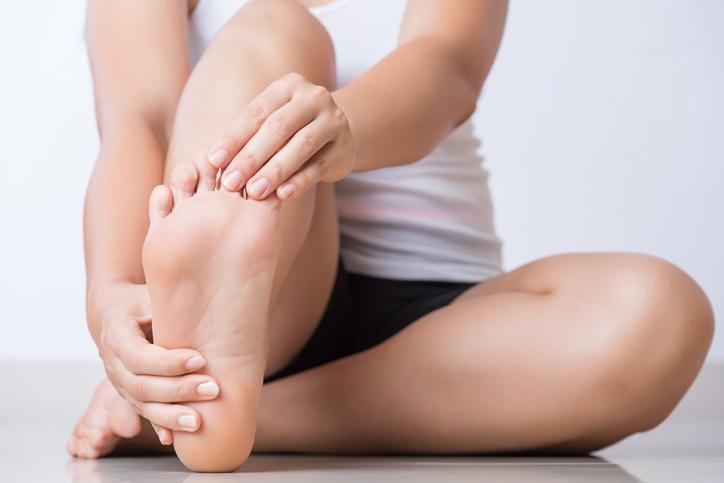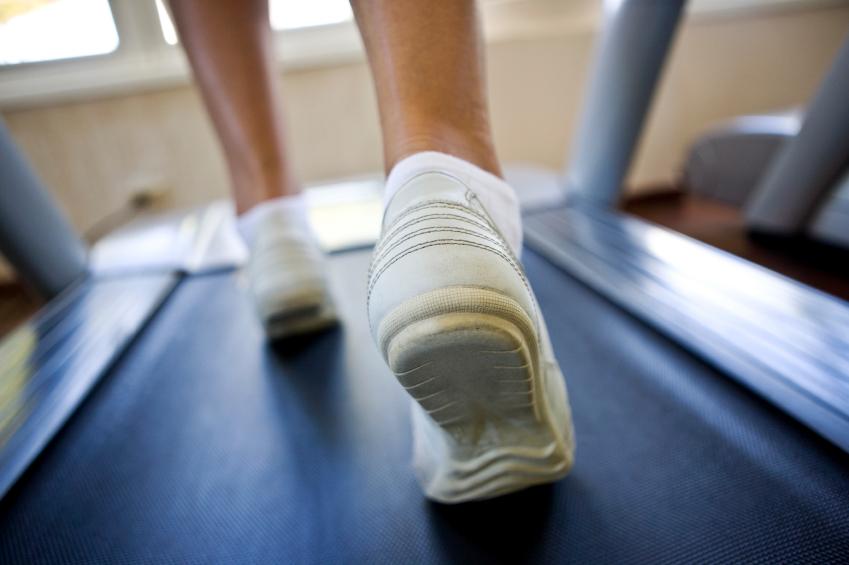Plantar fasciitis

What is plantar fasciitis or plantar fasciopathy?
Plantar fasciitis is the most common cause of pain under the heel. The plantar fascia is a broad, thick band of tissue which runs from under the heel bone to the front of the foot. Its function is to provide support to the foot when standing and shock absorption when running.
Pain in the heel comes on first thing in the morning or on starting to mobilise after having rested for a period of time. Studies have shown actual inflammatory cells are not present in most cases and so now the condition is often referred to as plantar fasciopathy rather than plantar fasciitis, to reflect that degeneration of the tendon tissue is a more likely cause.
Plantar fasciitis is most often associated with impact and running sports, especially those that involve toe running rather than heel running styles. It is also commonly diagnosed in individuals with poor foot biomechanics that place extra stress on the plantar fascia. Flat feet, weak foot-arch control muscles, and poor footwear, are common causes of plantar fasciitis.

Treatment for plantar fasciitis
Physiotherapy is important in the diagnosis and management of plantar fasciitis. Due to poor foot biomechanics being the primary cause of your plantar fasciitis, it is vital to thoroughly assess and correct your foot and leg biomechanics to prevent future plantar fasciitis episodes, or the development or progression of a heel spur.
We will provide you with manual therapy techniques such as joint mobilisations to loosen stiff joints, soft tissue massage or release, stretches to improve muscle flexibility, foot taping, lower limb strengthening exercises and occasionally night splints to help you manage this condition and prevent re-occurrence.
We may also recommend that you seek the advice of our podiatrist, who is an expert in the prescription on passive foot devices such as orthotics. Foot orthosis have been shown to potentially assist some sufferers of plantar fasciitis.
Our Physiotherapy treatment may include:
- Joint mobilisations to reduce joint stiffness
- Deep tendon frictioning to promote healing and soft scar tissue
- Myofascial and deep tissue release for muscle tightness
- Trigger point release
- Acupuncture and dry needling to reduce pain and muscle tightness
- Ultrasound to reduce inflammation and to promote healing / TENS for pain relief
- Muscle energy techniques
- Biomechanical assessmeny
- Individualised exercise programme incorporating strengthening, stretching and proprioception (PhysioQinetics Youtube Channel)
- Gait and running re-education
- Sport-specific rehabilitation
Often, non-steroidal anti-inflammatory drug e.g. ibuprofen / naproxen bought over-the-counter may be required in addition to our physiotherapy programme to fascilitate speedy recovery. In more severe cases where the pain is not improving as expected, you may require a referral to a consultant to consider further treatment options such as a steroid injection therapy.